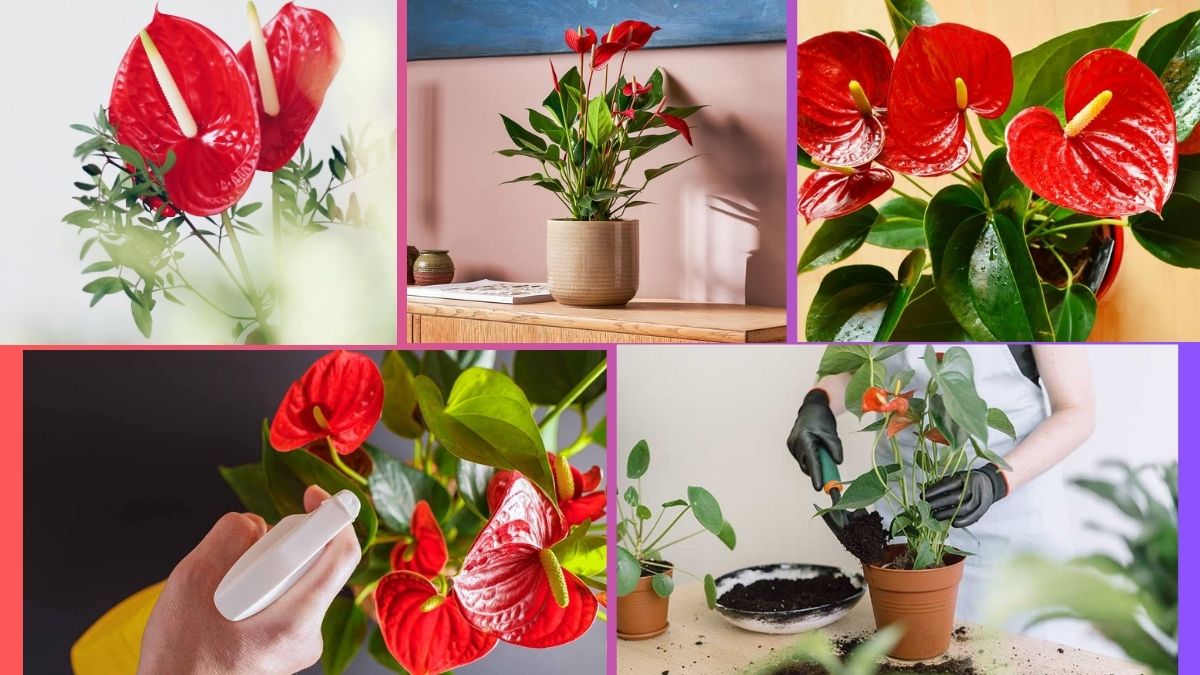Anthuriums, popularly known as Flamingo Flowers or Laceleaf, are among the most striking and sought-after tropical plants prized for their glossy, heart-shaped leaves and bright, long-lasting spathes. Native to the warm, humid rainforests of Central and South America, these plants are relatively easy to maintain indoors, provided their moisture requirements are carefully managed.
One of the most critical aspects of Anthurium care is watering. Getting it right ensures lush foliage and frequent blooms, while neglecting it can lead to serious plant stress. In this article, we’ll dive deep into how often you should water an Anthurium, factors influencing its watering needs, signs of overwatering and underwatering, and practical tips to maintain a thriving plant.
Understanding Anthurium’s Natural Habitat
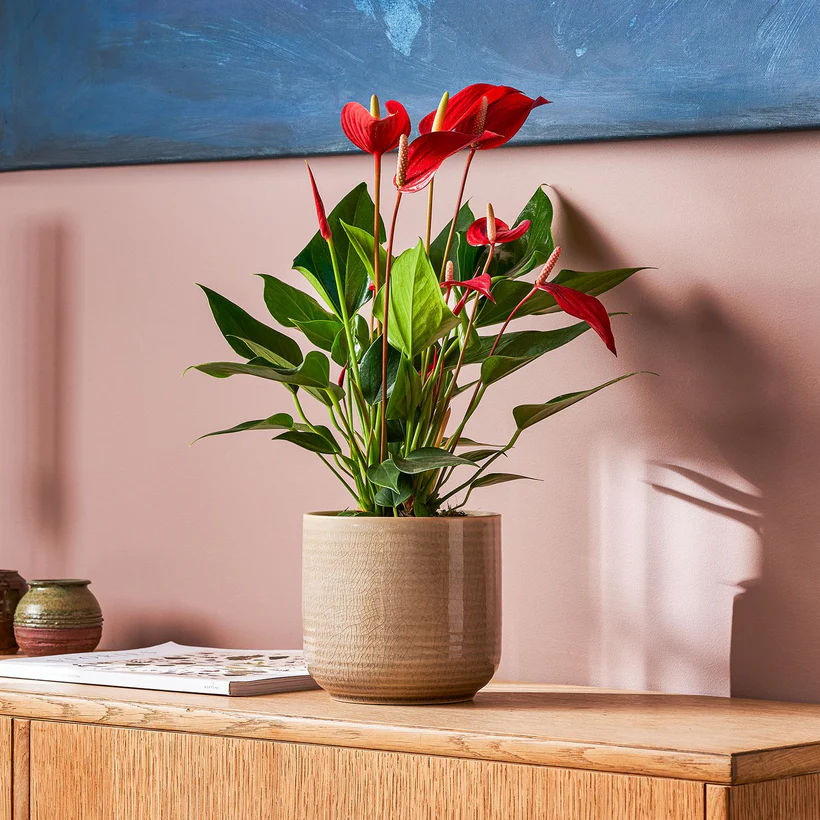
To determine the ideal watering frequency for Anthuriums, it’s important to first understand their native environment. Anthuriums naturally grow under the dense canopies of tropical rainforests, where:
- Temperatures stay consistently warm
- Humidity levels are high
- Soil remains lightly moist but not waterlogged
- Rainfall is frequent but well-drained through loose, organic-rich forest soil
This means Anthuriums thrive in moist yet well-aerated conditions — a balance that every grower should aim to replicate in indoor or garden settings.
How Often Should You Water an Anthurium?
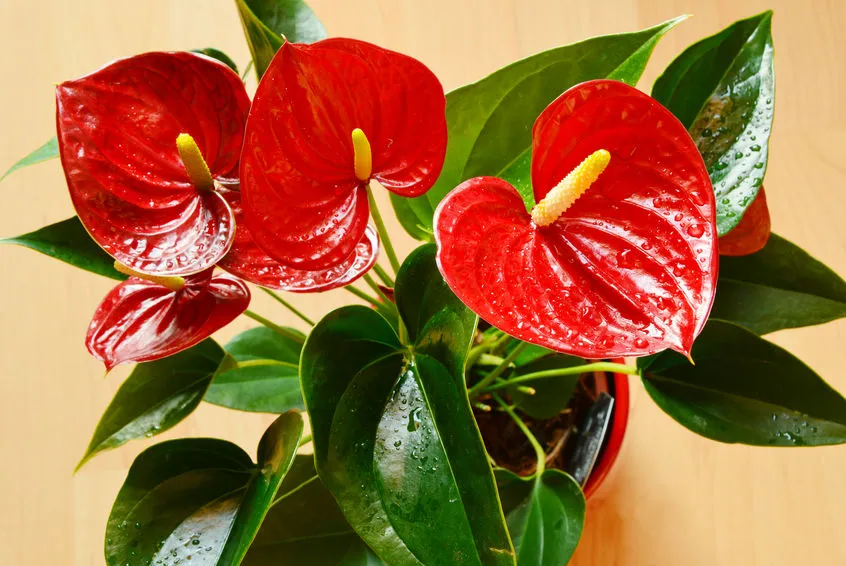
1. General Watering Schedule
As a general rule:
- Water your Anthurium once a week during warm, active growing seasons (spring and summer).
- Reduce watering to once every 10-14 days during cooler months (fall and winter) when the plant’s growth slows down.
However, it’s vital to remember that watering frequency should not be rigid. It should depend on environmental factors such as temperature, humidity, soil type, and the plant’s specific needs.
Factors Influencing Anthurium’s Watering Frequency

Several variables can affect how often an Anthurium needs water. Let’s take a closer look:
1. Temperature and Season
- Higher temperatures and dry conditions increase evaporation, causing soil to dry out faster, requiring more frequent watering.
- In winter or cool climates, evaporation slows, and Anthuriums enter a semi-dormant phase. During this time, water needs drop significantly.
Tip: Always adjust your watering schedule with the seasons.
2. Humidity
Anthuriums prefer humidity levels between 60-80%. In high humidity, soil retains moisture longer, reducing the need for frequent watering. Conversely, in dry indoor environments (especially in winter with heaters on), you may need to water more often.
Tip: Consider using a humidifier, pebble tray, or regular misting to maintain ideal humidity.
3. Soil Type
The potting mix plays a crucial role in determining how quickly water drains:
- A well-draining, airy, organic-rich mix (such as one containing orchid bark, perlite, and peat moss) retains moisture without becoming soggy.
- Dense, compacted soils retain too much water, increasing the risk of root rot.
Tip: Always check the top 1-2 inches of soil before watering. If it feels dry, it’s time to water.
4. Pot Size and Material
- Smaller pots dry out faster than larger ones.
- Terracotta pots are porous and allow moisture to evaporate more quickly, while plastic pots retain moisture longer.
Tip: Choose a pot with ample drainage holes to prevent waterlogging.
Signs of Overwatering and Underwatering
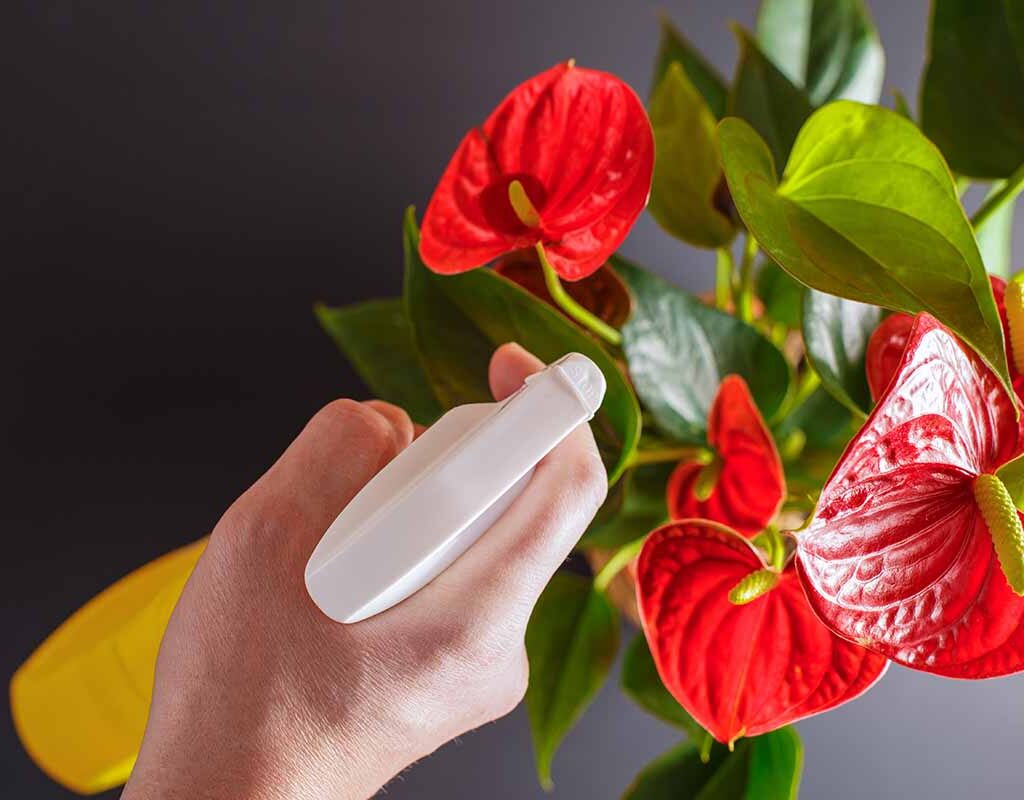
Watering mistakes can harm your Anthurium. Learn to recognize the signs early:
1. Signs of Overwatering
- Yellowing leaves, especially lower leaves
- Wilting despite moist soil
- Mushy, blackened roots (root rot)
- Foul-smelling soil
Solution: Cut back on watering, remove affected roots, repot in fresh, well-draining mix.
2. Signs of Underwatering
- Crisp, brown leaf tips
- Drooping, dry leaves
- Dry, pulling away soil
- Slower growth and fewer flowers
Solution: Increase watering frequency, ensuring thorough soaking until excess water drains from the pot.
Best Practices for Watering Anthuriums
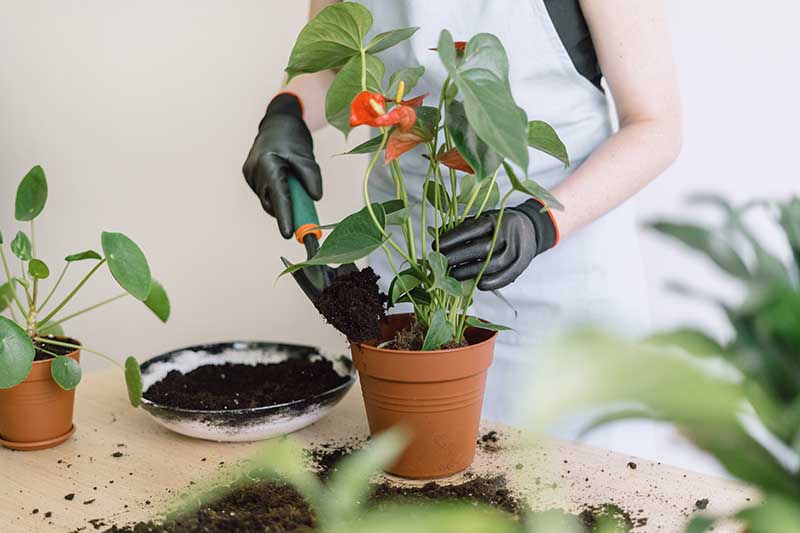
1. Water Thoroughly
When it’s time to water, do it deeply:
- Pour water evenly around the plant until it drains from the bottom.
- Discard excess water from saucers to prevent root rot.
2. Use Room Temperature Water
Cold water can shock Anthurium’s roots. Use lukewarm or room-temperature water.
3. Filtered or Rainwater is Ideal
Anthuriums can be sensitive to chemicals like chlorine and fluoride found in tap water. Use filtered water, rainwater, or allow tap water to sit overnight before use.
4. Check Soil Moisture First
Never water on a fixed schedule alone. Use your finger or a moisture meter:
- If the top 1-2 inches feel dry, it’s time to water.
- If still moist, wait a few days and check again.
Seasonal Watering Adjustments
Spring and Summer
- Active growth phase
- Water every 5-7 days
- Maintain high humidity with misting and pebble trays
Autumn and Winter
- Dormant period
- Water every 10-14 days
- Reduce misting but avoid letting soil completely dry out
Tip: Keep away from cold drafts and heating vents which can dry the soil faster.
Common Mistakes to Avoid
- Overwatering in cooler months
- Letting soil dry out completely
- Ignoring drainage holes
- Using compacted, poorly draining soil
- Watering based on a strict calendar rather than soil check
Conclusion
Anthuriums, with their exotic blooms and rich foliage, add undeniable charm to any indoor or outdoor space. However, their success hinges largely on proper watering habits.
As a rule, water Anthuriums once a week in warmer months and every 10-14 days in cooler seasons, adjusting based on soil moisture, temperature, humidity, and pot conditions. Always use well-draining soil and a pot with good drainage, and monitor your plant for signs of stress to fine-tune your watering routine.
By adopting these thoughtful watering practices, you’ll ensure that your Anthurium remains vibrant, healthy, and continuously flowering, transforming your space with its tropical elegance.
